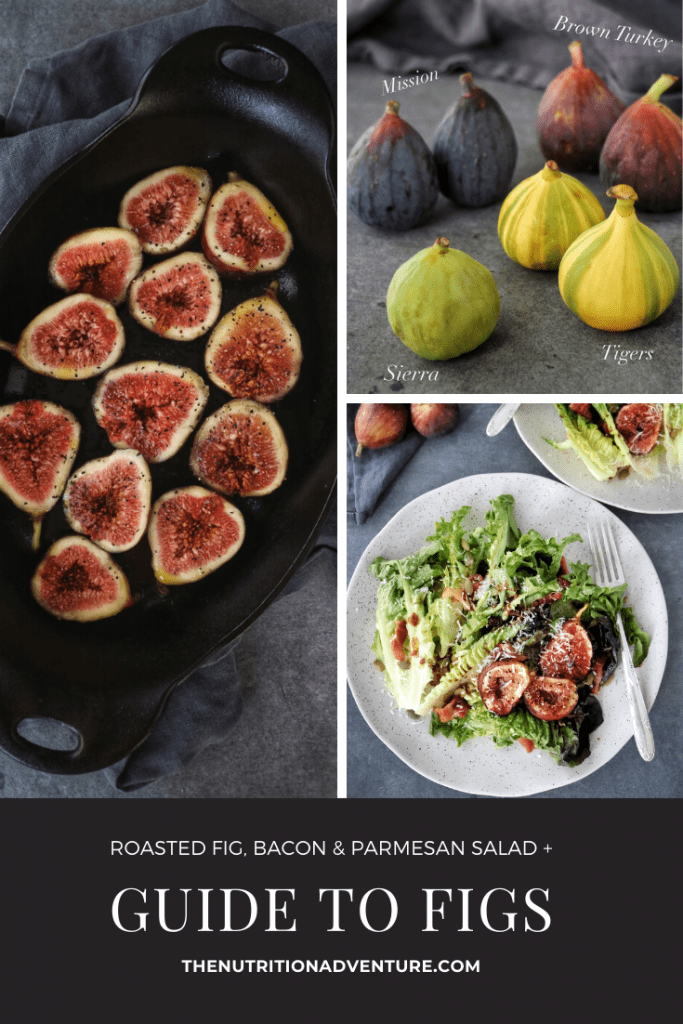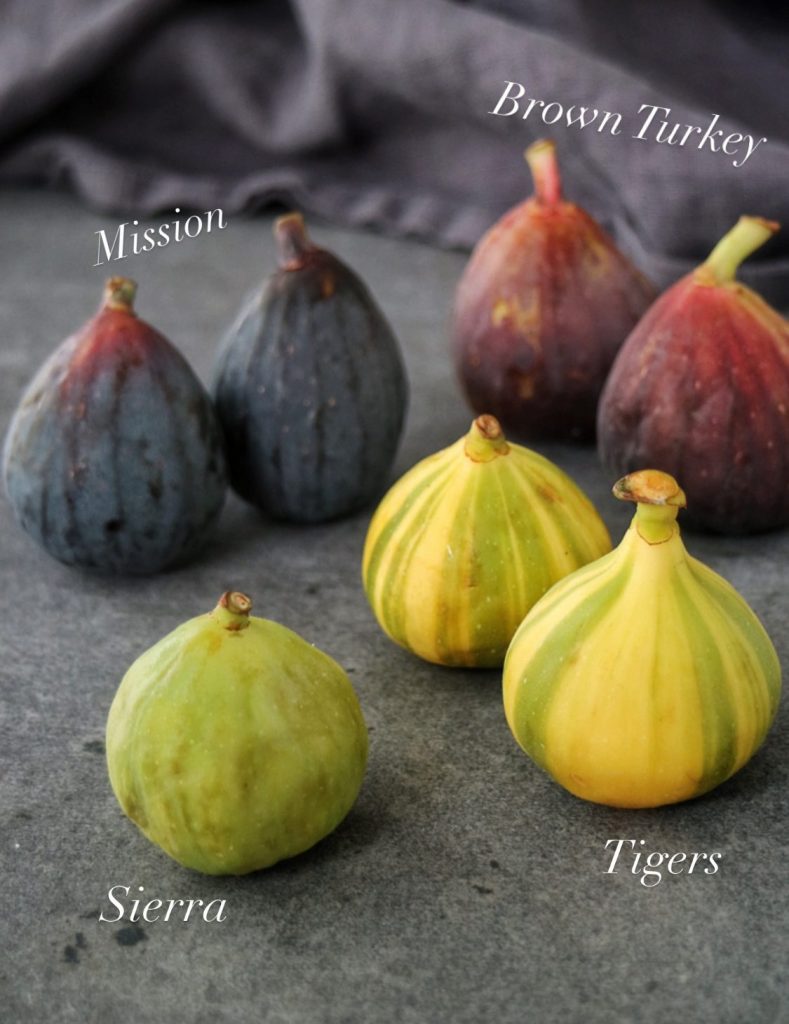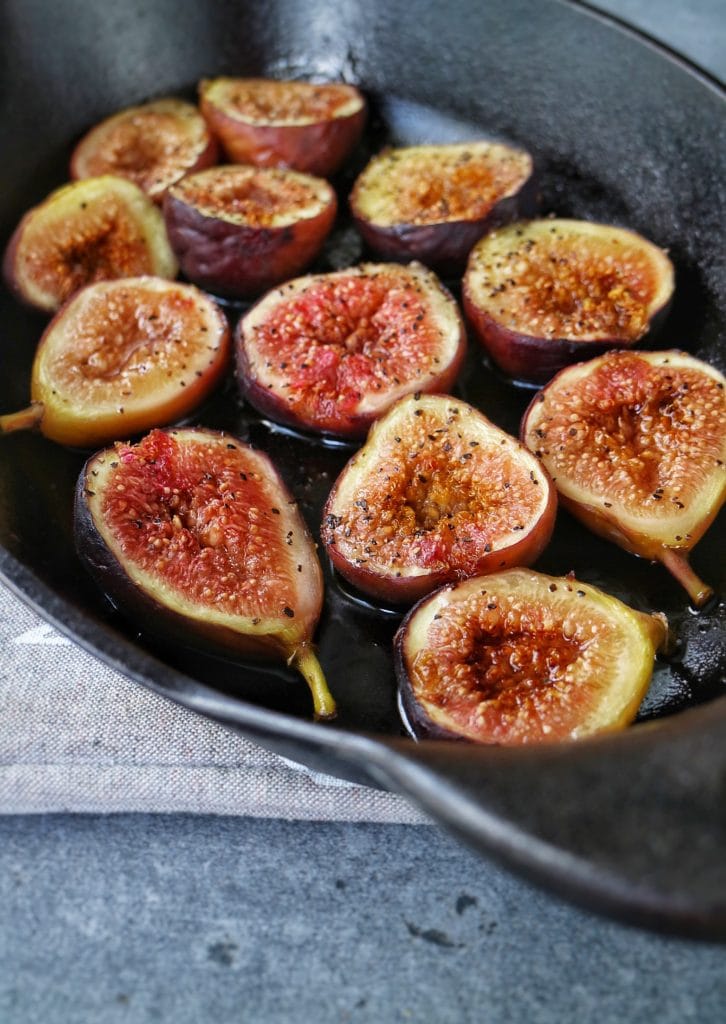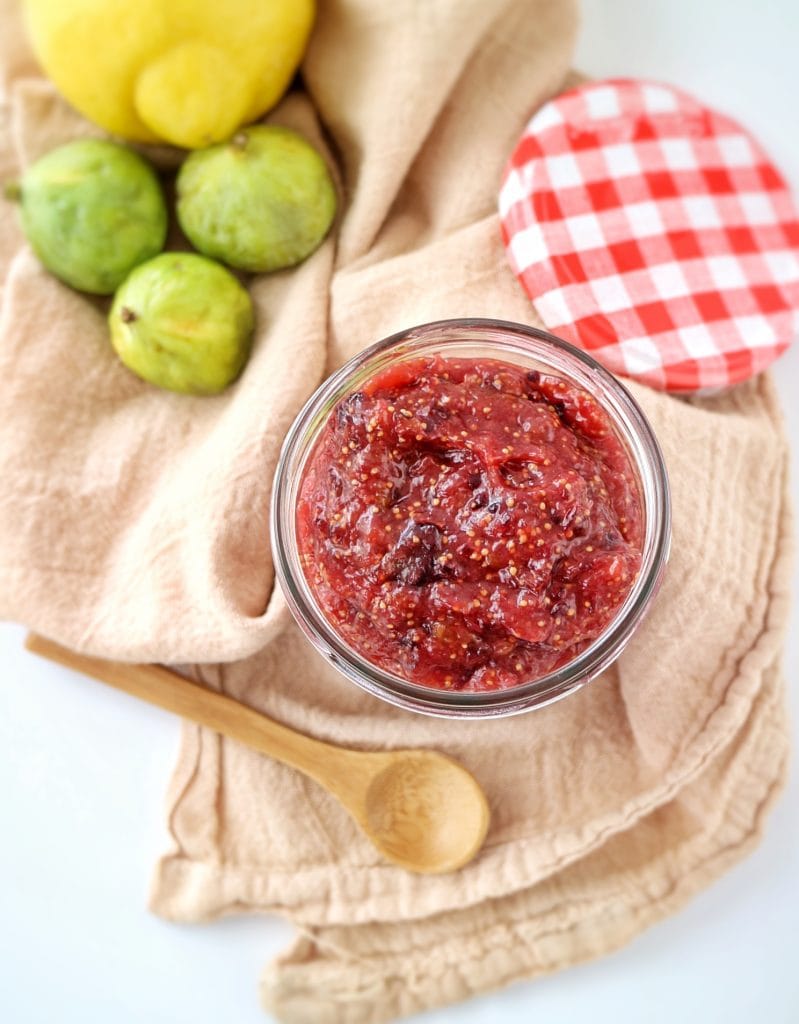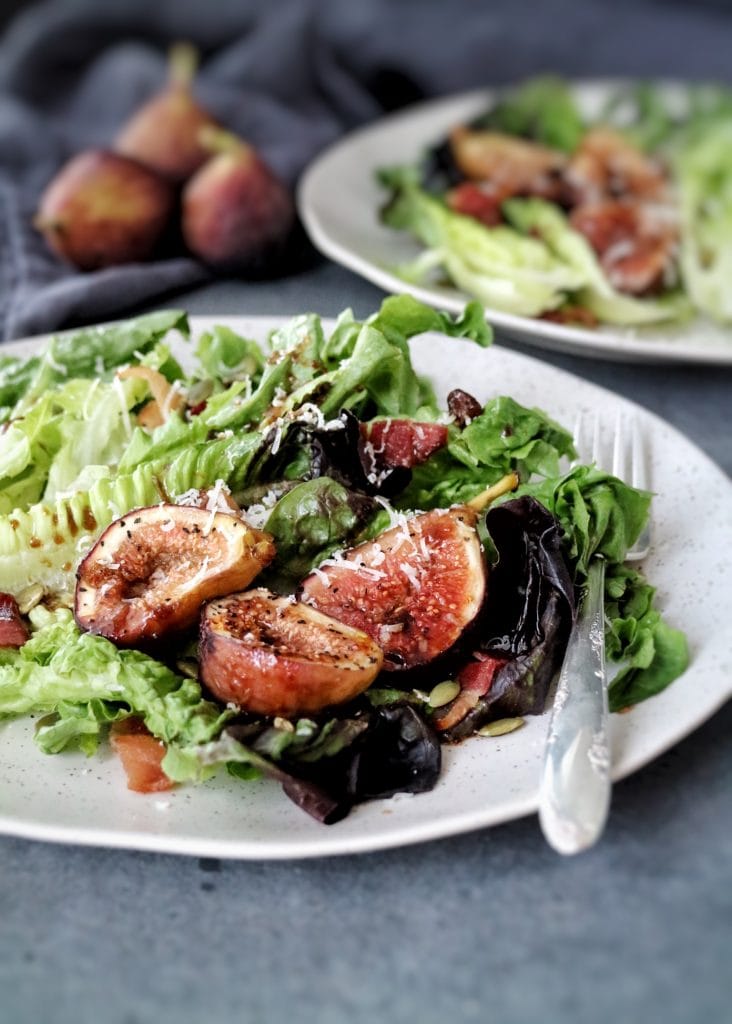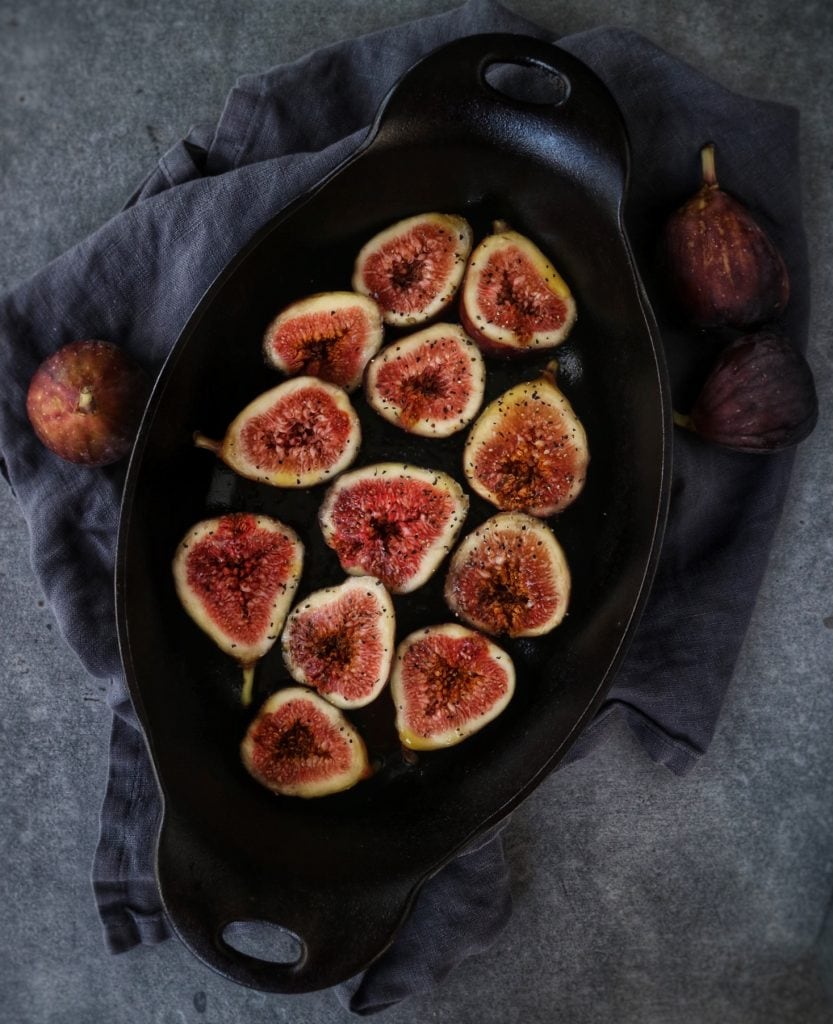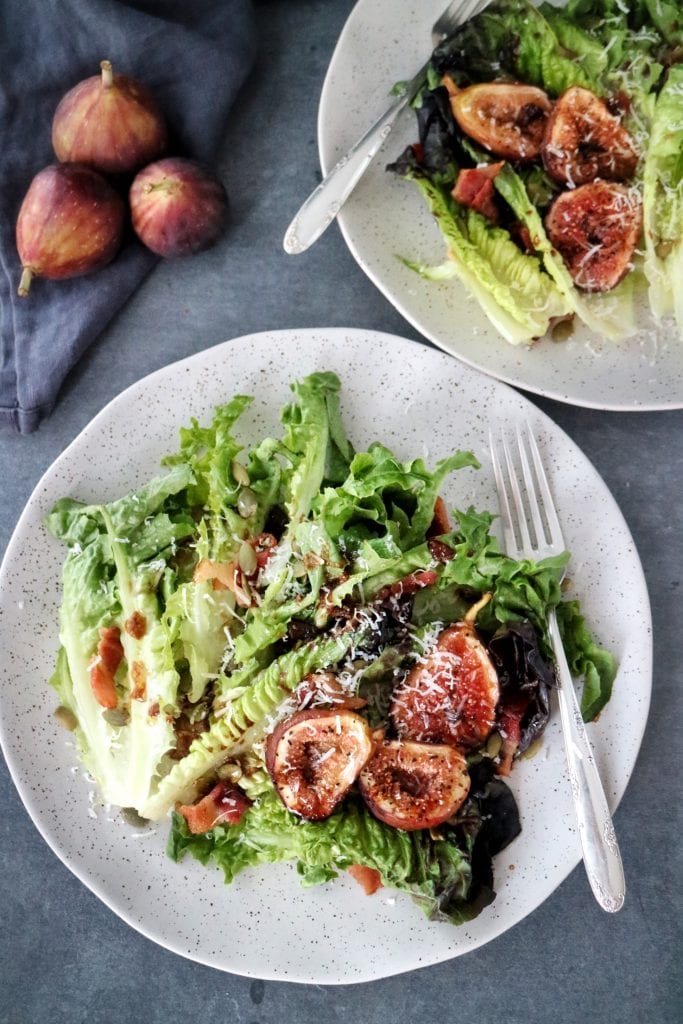Guide to Figs + Roasted Fig, Bacon & Parmesan Salad
A guide to figs covering different varieties, how to select them, nutrition facts, and how to enjoy them at home!
A couple months ago I did a reader survey to see what content you all enjoy seeing most on The Nutrition Adventure, and to find out what you’d like to see more of! I truly appreciate the time taken to complete the survey and the helpful feedback I received. And I sincerely thank you for continuing to follow along with me here and on social media.
Based on the overall feedback and a suggestion to share recipes and information about lesser known fruits and veggies, I was inspired to start a new series of posts. I’ll be sharing comprehensive guides to certain fruits and vegetables you may pass up in the produce section because you’re unsure what they taste like, how to select and prepare them, etc. Today’s post is the first in the series with a complete Guide to Figs.
Guide to Figs
This tree fruit is truly unlike any other. With a soft, edible flesh and a sweet, tiny seed-filled interior, figs have a very unique texture. Don’t let the seeds stop you from enjoying these because unlike blackberry seeds, they don’t get stuck in your teeth! Some varieties of figs are sweeter than others with a honey-like taste. Dried figs, like other dried fruits, have a more concentrated, sweet flavor compared to their fresh counterparts. This Guide to Figs will cover nutrition, season availability, varieties, selection, storage, and ways to use them. I’m also sharing a simple recipe for Roasted Fig, Bacon & Parmesan Salad as an easy way to start enjoying figs at home!
Nutrition
Figs offer a variety of nutritional benefits, including being a source of potassium, magnesium, and calcium, all of which can improve blood flow. Magnesium is also important for stress reduction, managing inflammation in the body, and even for getting a quality night of sleep.
This tiny fruit is an excellent way to get more fiber into your day. A serving of fresh or dried figs (about 3-5) provides 20% of the recommended dietary intake of fiber for women ages 31-50. Whether you choose fresh or dried, figs are a nutritious snack as-is or add-in ingredient for recipes!
Season
You can get your fresh fig fix from May through November, but you can find dried, canned, and frozen figs year-round. The first crop of figs appears in early summer, but this can be short-lived until the main crop is harvested in late summer and into fall. When I see fresh figs in my local grocery store, I buy them up because they are sometimes in limited supply in Tennessee. Depending on where you live, the availability of fresh figs may be slightly shorter, so don’t miss out!
[bctt tweet=”Have you tried figs? If you haven’t yet, or you want to learn more about them, read this comprehensive guide to fresh & dried figs!” username=”KarmanRD”]
Varieties of Figs
There are thousands of fig varieties around the world but I’m going to focus on 4 varieties more commonly found in the United States and that are grown in California. You may have seen these in your local grocery store! For the most part, the different fresh fig varieties have a very similar taste so if you find a recipe that calls for a specific type of fresh fig, it’s likely that any variety will work.
Mission Figs
Most likely to be the variety of fresh fig you’ll find at the grocery store, Mission figs have a deep purple/black skin and are very sweet. Mission figs are the most commonly found variety of dried figs as well.
Brown Turkey Figs
This variety has a purple-brown skin and is slightly less sweet than Mission figs. After Mission figs, the Brown Turkey figs may be the variety you’re likely to see in your grocery store (for those of us who don’t live near California!).
Sierra Figs
These green beauties have a lighter pink interior and a fresh, sweet flavor. I love the contrast of green with the pink!
Tiger Figs
One of the newer varieties of figs from California, Tiger Figs have a yellow skin with green stripes. On the inside, they’re bright red/pink and have a sweet, fruity flavor.
How to Select
Fresh figs are quite fragile so they’re often packed in a plastic container to protect them. The fruit should appear plump and have minimal to no splits in their skin. If they appear to be oozing liquid or look very wrinkly, pass them up. Dried figs are much easier to shop for and should have a slight sheen to their skin without any white spots.
How to Store
To keep fresh figs for as long as possible (i.e. a max of 3-4 days), store them in the refrigerator. Before enjoying, remove them from the fridge and let them come to room temperature for the best flavor. Fresh figs can be kept on the counter if you plan to eat them within 1-2 days. Dried figs can be stored in your pantry.
How to Use
Fresh figs can be enjoyed with minimal preparation—wash them, hold them by the stem, and take a bite! The entire fruit (minus the stem) is edible. If you’re cooking with figs, wash them and slice off the stem before cutting in half or into quarters.
Figs can be quite sweet, making them a great match for savory foods, especially meats and cheese. Prosciutto wrapped figs may be one of the best combos on the planet, so try that right away! You can even slice them and use them as a pizza topping.
Use fresh or dried figs to top oatmeal or breakfast quinoa jars, yogurt, toast with peanut butter, or snack on them as is. Figs can be used in baked goods like muffins or scones like many other fruits. They’re also great in leafy green salads or grain salads, and can be chopped up to make a sweet or savory compote to pair with meats.
If you want to savor your fresh figs for as long as possible, you can freeze them to use in smoothies later, make a jam like my Fig & Lemon Jam or make ice cream.
Roasted Fig, Bacon & Parmesan Salad
This is a super simple salad recipe that can be enjoyed as a meal on it’s own or served as an appetizer when entertaining. I love the colors in this salad and the combination of sweet, roasted figs with salty bacon and Parmesan.
Roasting the figs allows them to soften and become caramelized. And caramelizing fruit is always a delicious idea! The figs are drizzled with olive oil and honey before going into the oven for about 30 minutes.
Aren’t figs beautiful? I probably could have taken 1,300,384 more photos of these fresh figs but alas, that’s too many photos to share in a blog post. And according to the reader survey I mentioned earlier, you’re here for recipes & nutrition information, not an endless reel of fig photos. So let’s get back to the recipe.
I used a container of Artisan romaine lettuce to create this salad because the leaves are slightly crunchy, but also soft which works really well with the other textures in this salad. You could also use butter lettuce since it has a similar texture, or whatever leafy greens you prefer most. The bacon and pepitas (similar to pumpkin seeds) add a bit of crunch to this salad.
The dressing is a simple concoction of olive oil, balsamic vinegar, and fig jam. I used a store-bought fig jam that I already had in the refrigerator and it was the perfect addition to the dressing! If you don’t have fig jam or can’t find any at the store, you can use honey instead.
If you give this recipe a try, or decide to give figs a try after reading this guide, please leave a comment, or send me a message on Facebook or Instagram!
Ingredients
For Dressing:
- 1 1/2 tablespoons olive oil
- 1 1/2 tablespoons balsamic vinegar
- 1 tablespoon fig jam
- 1/4 teaspoon salt
For Salad:
- 1 container Artisan romaine lettuce or butter lettuce
- 4 slices bacon
- 2 ounces Parmesan cheese
- 2 tablespoons pepitas optional
- 6 Brown Turkey or Mission figs
- 1/2 teaspoon olive oil
- 1/2 teaspoon honey
- pinch of salt & pepper
Instructions
- 1. Prepare the dressing by whisking together the olive oil, balsamic vinegar, fig jam and salt in a small bowl. Set aside or store in an airtight container until ready to use.
- 2. To prepare salads, preheat oven to 350 degrees F and wash lettuce and figs. Pat dry with a paper towel. Set lettuce aside.
- 3. Cut stems off figs, then cut in half. Place fig halves in a shallow baking dish. Drizzle with olive oil, honey, and add a pinch of salt and pepper. Bake figs in oven for 30 minutes. Remove from oven and allow to cool slightly before placing on salad.
- 4. While figs are roasting, heat a medium-size skillet over medium heat to cook bacon. Once bacon is cooked to desired crispiness, remove from skillet and set on a plate lined with a paper towel to remove grease. Once bacon has cooled, chop into pieces to use as a salad topping.
- 5. Evenly distribute lettuce among 4 plates. Top each salad with 3 roasted figs, bacon, grated Parmesan cheese, and pepitas, if desired.
Notes
Nutrition
More recipes featuring figs:

